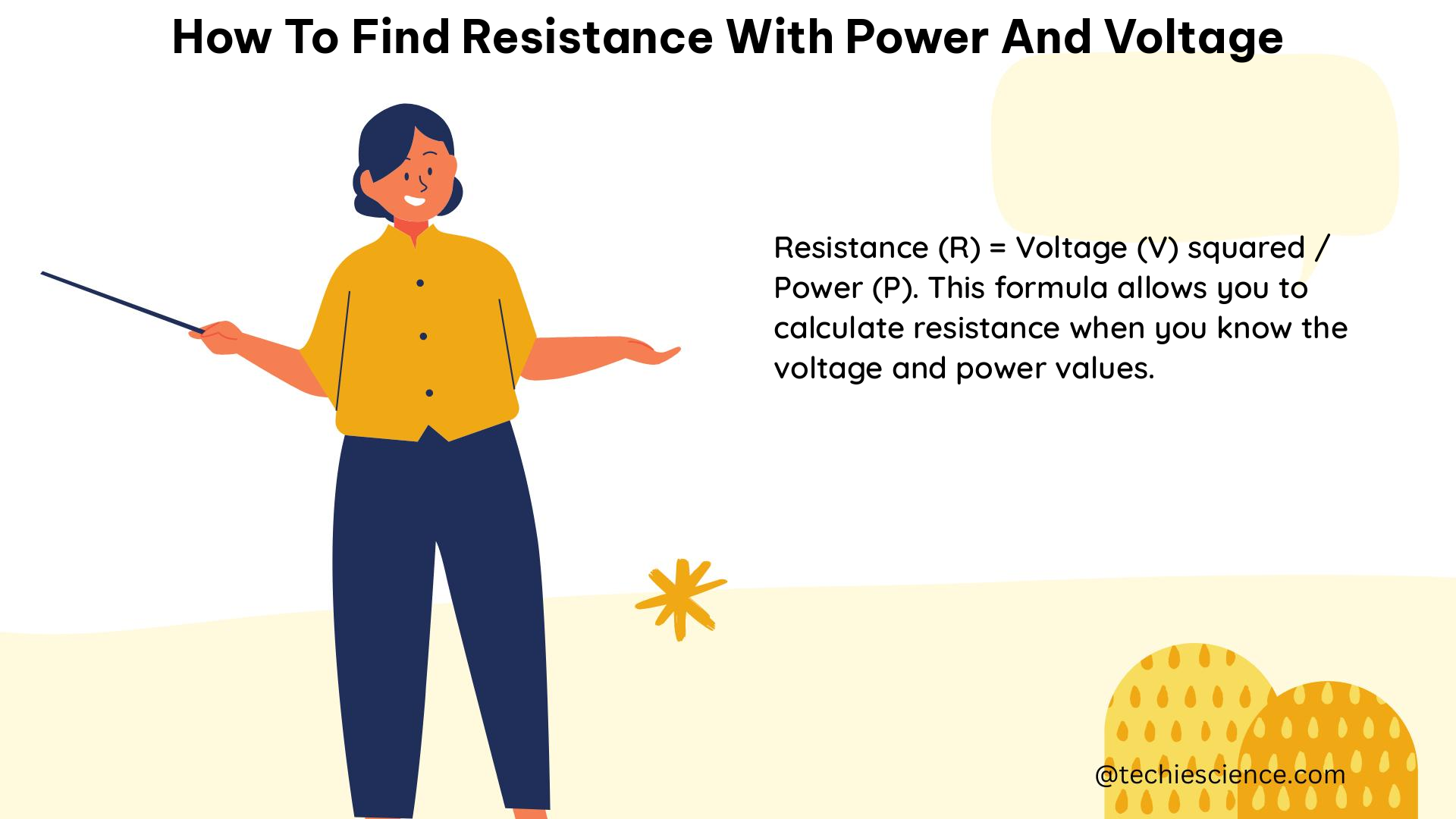Summary
Determining the resistance (R) in an electrical circuit can be achieved by leveraging Ohm’s Law and the formula for power (P = IV). By rearranging the power formula to solve for current (I = P/V) and then substituting it into Ohm’s Law (V = IR), we can derive the formula for resistance as R = V^2 / P. This guide delves into the theoretical foundations, practical examples, and potential sources of error when measuring resistance using power and voltage measurements.
Understanding Ohm’s Law and Power Formulas

Ohm’s Law is a fundamental principle in electrical engineering that describes the relationship between voltage (V), current (I), and resistance (R) in a circuit. The mathematical expression of Ohm’s Law is:
V = IR
The power (P) dissipated in a resistive circuit is given by the formula:
P = IV
By rearranging the power formula to solve for current, we get:
I = P/V
Deriving the Resistance Formula
Substituting the expression for current (I = P/V) into Ohm’s Law (V = IR), we can solve for the resistance (R):
V = I(P/V)
V = P/V
R = V^2 / P
This formula allows us to calculate the resistance (R) in a circuit, given the power (P) and voltage (V) measurements.
Practical Examples
-
Example 1: If the power is 100 watts and the voltage is 50 volts, the current is 100 / 50, or 2 amps. The resistance is then 50^2 / 100, or 25 ohms.
-
Example 2: A circuit has a power of 50 watts and a voltage of 20 volts. What is the resistance?
- Resistance (R) = V^2 / P
- R = (20 V)^2 / 50 W
- R = 400 V^2 / 50 W
- R = 8 ohms
Considerations and Sources of Error
When measuring resistance using power and voltage, it is important to consider the following factors that can affect the accuracy of the measurements:
- Wiring Resistance: The resistance of the test leads can contribute to the overall measured resistance, leading to inaccuracies.
- Electromotive Force: Stray electromotive forces, such as those generated by thermoelectric effects, can introduce errors in the measurements.
- Thermal Noise: Thermal noise, also known as Johnson noise, can affect the resistance measurement, especially at low resistance values.
- Leakage Current: Leakage current through insulation or other paths can introduce errors in the resistance measurement.
- Dielectric Absorption: The ability of a dielectric material to store and release electrical energy can affect the resistance measurement.
- Friction Noise: Mechanical vibrations and movements can introduce noise and errors in the resistance measurement.
- External Noise: Electromagnetic interference from external sources can also affect the resistance measurement.
- Temperature, Humidity, and Wind: Environmental factors, such as temperature, humidity, and wind, can influence the resistance measurement.
To minimize the effects of these sources of error, it is recommended to use a temperature-compensated resistance meter that can automatically capture the temperature-converted resistance value.
Conclusion
In summary, to find the resistance (R) in an electrical circuit using power (P) and voltage (V) measurements, you can apply the formula R = V^2 / P, which is derived from Ohm’s Law and the power formula. This method provides a straightforward approach to determining resistance, but it is important to consider the various sources of error that can affect the accuracy of the measurements. By understanding the theoretical foundations and practical considerations, you can effectively utilize power and voltage data to accurately determine the resistance in electrical circuits.
Reference:

The lambdageeks.com Core SME Team is a group of experienced subject matter experts from diverse scientific and technical fields including Physics, Chemistry, Technology,Electronics & Electrical Engineering, Automotive, Mechanical Engineering. Our team collaborates to create high-quality, well-researched articles on a wide range of science and technology topics for the lambdageeks.com website.
All Our Senior SME are having more than 7 Years of experience in the respective fields . They are either Working Industry Professionals or assocaited With different Universities. Refer Our Authors Page to get to know About our Core SMEs.